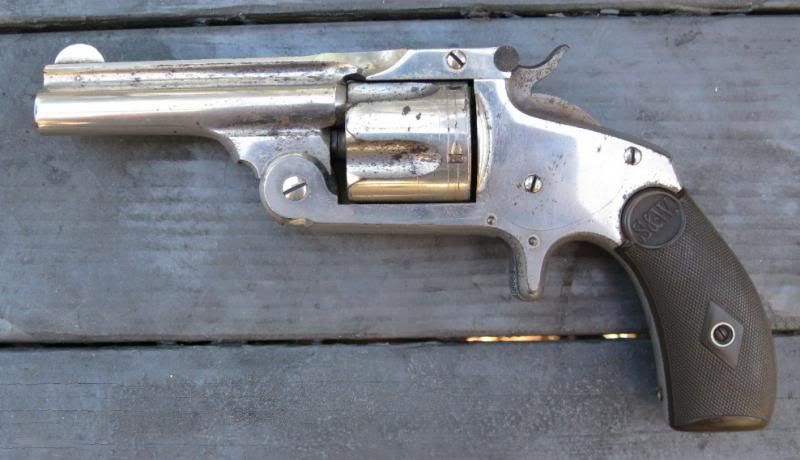It looks like one of the many Nagant type revolvers. Can you turn the butt swivel and open the action? It is similar to the Swiss Nagant.
^^ Sure as heck looked like that to me, too, but I didn't know if they were made in .38 anything.
Respectfully I think you guys are mistaken. I'm certainly no expert, but I do like antique guns. Based on the intricate molding on the grip, the grip frame shape, and the overall appearance, I agree with Driftwood's comments. This looks like a decendant of the Lefaucheux revolvers, which were originally pinfires. Try Googling "Lefaucheux center fire revolver" and look at the images page. You'll see what I mean.
Original Lefaucheux revolvers sell for a pretty decent price if they are in good shape. However, many guns derived from those earlier designs were built, and it is hard to track which is which. On top of it, there were many factories in Europe, and several in Belgium that produced guns like this. Some were made in Germany, France, Spain..... It is definitely not a Nagant derived design. The lanyard loop is likely exactly that, a lanyard loop only.
Unfortunately the only proof mark I can see is on the barrel in the third picture. It looks like a capital T with a small symbol above it, maybe a crown. I can't find any corresponding info for that mark though, so it's possible it is not Belgian.
I would question the caliber of the pistol? I was surprised? I had a Swiss Nagant and it sold quickly for $400 bucks at a gun show?

Me too! There were pinfires ranging from 5mm up to I think 12mm, and there were a variety of later center fire cartridges made in a variety of diameters. However, I really question that ANY of them were ever chambered for 38 S&W. I don't know that for sure though. If I had to guess, I bet the seller happened to stumble on the 38 S&W and found out it happened to fit the gun. If that's the case, that seems pretty unsafe. It's also possible a previous owner had a smith cut the cylinder to accept the more modern cartridge. The nickel platting's originality must be questioned on the cylinder.
I have no doubt that some of my assertions are not quite correct, as it is based on a lot of Google research I did a few years ago when I bought this.
Mine is obviously a pinfire though. I was told it is a 9mm, but I think it is closer to 8. It doesn't really matter to me though as it sits in a shadow box in my curio cabinet. A fellow THR member who was knowledgeable in the topic told me he thought it was built in the 1860's. I'll see if I can get him to chime in.
I do notice though that the loading gate is closer to the appearance of a Bodeo, or French Ordinance 1873. However, that design was used on a lot of revolvers.



















